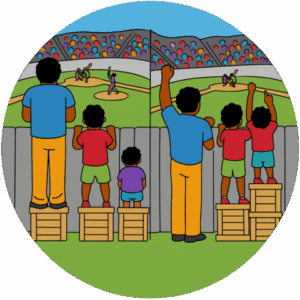
Helping Your Student Succeed: 4 Types of Accommodations Every Parent Should Know
Every student learns differently, and for students with disabilities, small adjustments can make a big difference. Accommodations are tools and procedures that provide equal access to instruction and assessment for students with disabilities. Accommodations are individualized and should not be intended to reduce learning expectations.
Let’s break down the four main types of accommodations in simple terms, with examples you might see at school.
1. Presentation: How Your Student Receives Information
These accommodations help your student access lessons in a way that works for them.
Examples:
- Large print, e-text, or audio versions of books
- Braille or tactile graphics for children with vision impairments
- Captions or sign language for videos
- Highlighted keywords or color-coded materials
- Digital tools that read text aloud
These are especially helpful for students who struggle with reading, seeing the board, or visual focusing.
2. Response: How Your Student Shares What They Know
Response accommodations give your student options for how they answer questions or complete tasks.
Examples:
- Saying answers out loud instead of writing
- Using speech-to-text or typing instead of handwriting
- Pointing to answers or using pictures
- Using manipulatives for math
This helps students who may have trouble with writing, speaking, or fine motor tasks.
3. Setting: Where and How Your Student Learns
Setting accommodations change the environment to reduce distractions or meet sensory needs.
Examples:
- Testing in a quiet room
- Preferential seating (e.g., near the teacher)
- Access to noise-canceling headphones or calming tools
- Different lighting or furniture setup
This type of support helps students who are easily overwhelmed or distracted by noise, movement, or visual clutter.
4. Timing & Scheduling: When and How Long Learning Happens
Some students need more time, frequent breaks, or a different schedule to do their best.
Examples:
- Extra time on tests or assignments
- Breaks between activities
- Shorter work periods with time to reset
- Working during the time of day they’re most alert
These are great for students who get fatigued easily or need more time to process information.
A Note on Individualized Support
No two students are the same, and neither are their accommodations. Some students need tools or strategies that are creative and tailored just for them, like using a music app to calm down before tests. These should always be documented in your student’s IEP or 504 Plan.
Final Thoughts
Accommodations help create equal learning opportunities. They aren’t about giving unfair advantages, but provide the right support so your student can learn and show what they know. Every child deserves the chance to succeed, and with the right tools and a strong support team, your student can thrive during the upcoming school year.
If you have questions about your student’s accommodations or believe additional support may be needed, we encourage you to contact the Utah Parent Center at 801-272-1051. Our parent consultants are available to assist you in understanding the accommodations process and can guide you on how to effectively communicate with your student’s school team. As a parent or guardian, your involvement plays a crucial role in advocating for your student’s educational success.
Resources
Accommodations & Assisting Students with Disabilities: Bureau of Exceptional Education and Student Services Florida Department of Education
ADHD & Accommodations: Short Video How to ADHD







